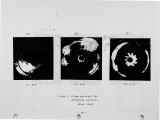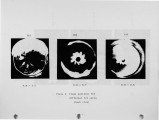| OCR Text |
Show The contours of C02 and 02 concentrations for the three flames are shown in Fig.5-S.The C02 species is the major product of burnt gases and 02 values reflect the concentrations of oxygen after combustion. The result of the 5=0.3 swirl flame in Fig.5-(a) shows that there are high C02 values around 15% in the near-wall region, x/D=O.25-0.8 and r/R)0.7 , which locates the outer boundary of the fuel spray. The gradual reduction in the 02 concentrations and the increase in the C02 values with downstream center line show again that chemical reaction does not take place around axis. It is also evident from the above observations that there is no central recirculation zone in this low-swirl flame. The high velocity air stream flows along the center line and dilutes with high temperature burnt gases. The low temperature of central part of combustor and weak tangential velocity due to low-swirl imply that most of the fuel droplets were not well-mixed with sorrounding air and got · slow evaporation in the flame zone. For 5=0.8 and 5=1.2 swirl flames, the C02 and 02 concentrations, about 10.5% and 8.5% respectively,are comparatively uniform than those observed in the low-swirl case . The recorded temperature and C02, 02 concentrations reveal the existence of the central recirculation zone in highswirl flames. The high temperature burnt products are drawn back upstream by recirculation to enhance the evaporation of fuel droplets. The fuel droplets are brought to the nearwall region and well-mixed with air by strong tangential velocity airstream due to high-swirl effect and the flame length is therefore shorten. The contours of CO concentrations in Fig.7 show that the concentrations of CO species for low-swirl flame is generally higher than those of high-swirl flames, especially around the wall region. The high values of CO is observed in the region of x/D=O.4-0.8 around r/R=O.S for 5=0.3 swirl flame. There is only a small amount of air are transported to the region of fuel droplets and the 02 concentrations are not sufficiently high for further oxidation of CO and other unburned hydrocarbons, though the CO and He values remain high.But for 5=0.8 and 5=1.2 swirl flames,the concentrations of oxygen is high enough for complete combustion in the near -wall zone due to large tangential velocity. The temperature and concentrations contours of the the three swirler flames from Fig.2-7 show that the influence of swirl level on flame behavior is significant. In general, - 6 - |























